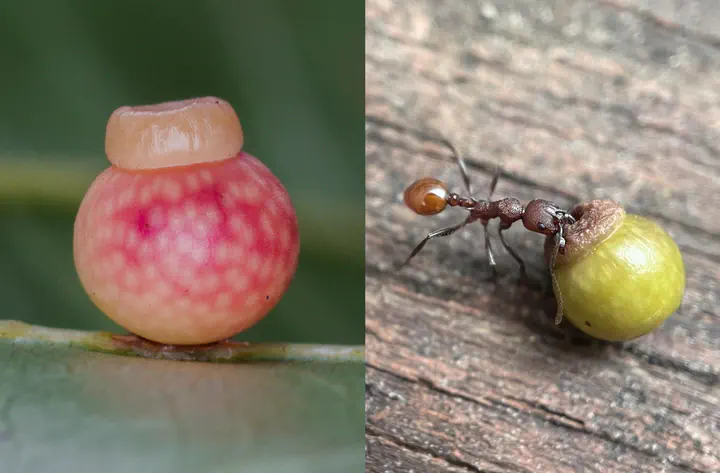 Image credit: [Antoine Guiguet, Andrew Deans, Penn State]
Image credit: [Antoine Guiguet, Andrew Deans, Penn State]Abstract
Ants disperse oak galls of some cynipid wasp species similarly to how they disperse seeds with elaiosomes. We conducted choice assays in field and laboratory settings with ant-dispersed seeds and wasp-induced galls found in ant nests and found that seed-dispersing ants retrieve these galls as they do myrmecochorous seeds. We also conducted manipulative experiments in which we removed the putative ant-attracting appendages (“kapéllos”) from galls and found that ants are specifically attracted to kapéllos. Finally, we compared the chemical composition and histology of ant-attracting appendages on seeds and galls and found that they both have similar fatty acid compositions as well as morphology. We also observed seed-dispersing ants retrieving oak galls to their nests and rodents and birds consuming oak galls that were not retrieved by ants. These results suggest convergence in ant-mediated dispersal between myrmecochorous seeds and oak galls. Based on our observations, a protective advantage for galls retrieved to ant nests seems a more likely benefit than dispersal distance, as has also been suggested for myrmecochorous seeds. These results require reconsideration of established ant-plant research assumptions, as ant-mediated seed and gall dispersal appear strongly convergent and galls may be far more abundant in eastern North American deciduous forests than myrmecochorous seeds.